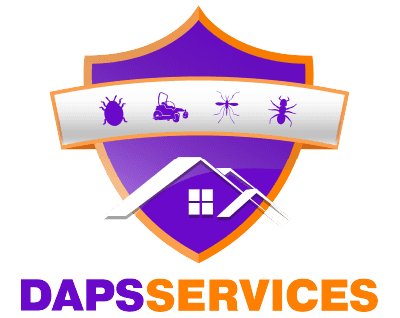Humidity doesn’t just affect comfort; it directly impacts the likelihood and severity of pest infestations. Moist environments create ideal living conditions for several common pests, including ants, cockroaches, mosquitoes, rodents, spiders, and termites. These pests are drawn to areas with consistent moisture, where they can nest, reproduce, and access food sources more easily.
Whether indoors or outdoors, areas with excess moisture provide the conditions these pests need to thrive. Understanding how humidity contributes to pest infestation is essential for protecting your home and yard throughout the year.

Why Moisture Attracts the Most Common Pests
When the air is humid or surfaces remain damp, many pest species become more active. Some pests, like cockroaches and mosquitoes, rely on moisture for survival. Others, like termites and rodents, take advantage of softened wood and vulnerable structural areas.
Ants often trail near sinks, baseboards, or around plumbing fixtures where condensation builds. Cockroaches prefer dark, damp spaces such as bathrooms, under kitchen appliances, and inside cabinets. Mosquitoes need standing water to lay eggs. Rodents seek shelter and water in crawl spaces or attics. Spiders follow their prey, so areas with active insect populations and humidity make perfect nesting sites. Termites, especially subterranean species, require moisture in the soil to build and maintain their colonies.
Humidity does not directly cause infestations, but it makes the environment far more favorable for pests already nearby. Once established, many of these pests multiply rapidly and become difficult to remove without professional help.
For those struggling with persistent indoor pest activity, this resource on cockroach elimination tips offers practical insights into how infestations often begin and why moisture is a key factor.
Areas Around the Home That Attract Moisture-Loving Pests
Some parts of your home are more prone to moisture than others. Identifying and managing these areas can prevent long-term infestations before they begin.
- Bathrooms and Kitchens: Water spills, leaks, and constant humidity make these high-risk zones for cockroaches and ants.
- Basements and Crawl Spaces: Poor ventilation and ground moisture create ideal habitats for rodents, termites, and spiders.
- Attics: Trapped heat and insufficient airflow lead to high humidity that attracts rodents and moisture-loving insects.
- Gutters and Downspouts: When clogged, these areas cause water to pool near the home’s foundation, increasing the risk of termites and ants.
- Lawns and Gardens: Overwatering and poor drainage create standing water that draws mosquitoes and brings pests closer to your foundation.
Regular inspection and ventilation improvements in these areas will help maintain drier conditions that deter pests.
Signs That Moisture Is Driving an Infestation
Moisture-related pest problems often start subtly. Being aware of the following signs can help you act before infestations take hold.
- A musty odor in closets, basements, or behind appliances
- Damp or warped wood near windows or baseboards
- Bubbling paint or peeling wallpaper
- Water stains or discoloration on ceilings or drywall
- Increased spider webs or sightings in corners and damp spaces
- Insect activity around sinks, drains, or plumbing areas
These symptoms usually indicate hidden moisture problems. Left unaddressed, these conditions will continue to attract pests and may eventually cause structural damage.
Practical Tips for Moisture Control
Keeping humidity under control is one of the most effective ways to prevent pest infestations. Even small changes can make a noticeable difference in pest activity.
- Use dehumidifiers in basements, attics, and poorly ventilated areas
- Repair plumbing leaks, including small drips, as soon as they appear
- Clean and maintain gutters and downspouts to ensure proper drainage
- Avoid overwatering plants and keep the soil away from direct contact with foundations
- Install fans or increase airflow in bathrooms, laundry rooms, and kitchens
- Ensure HVAC systems are draining condensation properly and not adding to indoor humidity
These preventative measures reduce the environmental factors that pests rely on, helping you maintain a cleaner, safer home.
When It’s Time to Call a Professional
In some cases, pests continue to appear despite regular cleaning and moisture control. This often points to hidden colonies or underlying structural issues that can’t be resolved without expert help. Professionals can assess conditions that may not be visible to the homeowner, such as inside walls, beneath foundations, or in dense attic insulation.
They can also apply targeted treatments and recommend follow-up strategies based on your property’s unique risks. Choosing a pest control plan that matches your needs is an important step toward long-term protection. If you’re weighing your options, this article on choosing a pest plan provides helpful guidance on what to consider before committing to any solution.Moisture is one of the leading factors that encourage pest activity inside and around your home. By staying alert to the signs and taking preventive action, you can reduce the risk of infestation and protect your living space year-round. If you’re noticing signs of moisture-related pest problems or want expert advice, contact DAPS Services for a thorough assessment and tailored treatment solutions.

